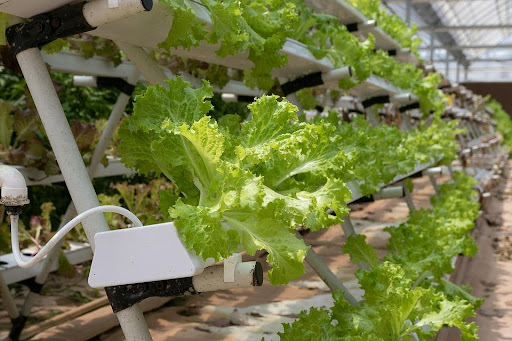
 Loading... Please wait...
Loading... Please wait...Save Money. Grow Your Own!
Fast Plain Box Shipping.
We ship to the US & Canada.
Posted on 8th Dec 2021

Valued at USD $9.5 billion in 2020 the rise in popularity of hydroponics is set to continue with the global hydroponics market forecast to grow at a compound annual growth rate (CAGR) of 11.3%, reaching USD $17.9 billion by 2026.
Hydroponics is a growing field within horticulture that involves growing plants without soil. Instead, plants are grown in a medium that contains inorganic substances as pine bark, coco coir, coconut fiber, or gravel. Without the need for soil, nutrients in the water can be more directly absorbed by the plant’s roots.
If you are considering growing your plants using this technique then read on for some specialist knowledge required for hydroponic growing.
Water Requirements
To grow plants hydroponically, it’s important to get the pH of the water of the growing medium right. The optimal pH is essential for growing healthy plants that can absorb the nutrients needed by the plants’ roots.
Ideally, a slightly acidic pH, ranging between 5.5 to 6.5, is best for your plants to thrive using this method. You can test your hydroponic nutrient solution using pH strips, litmus paper or a pH meter and should test the pH every few days.
The Electrical Conductivity (EC) of the water is also a vital step to check as it measures the electrical conductivity of your nutrient solution and indicates the amount of dissolved salts and other chemicals in the water.
Checking the EC will ensure your plants are getting the necessary minerals and nutrients required from the water. A high EC level could prevent the absorption of nutrients by the roots while a low EC can signal a nutrient deficiency.For hydroponic plants, the ideal EC levels are between 1.2 and 2.0.
The water should also be kept at a temperature somewhere between 68°F and 72°F.
Air Purification
Without a proper air purification system, you run the risk of airborne pathogens entering your indoor growing area causing problems for your plants.
Although invisible to the eye, pathogens which include mold and fungi spores as well as certain bacteria can cause disease to your crop. In addition, pests such as mites, aphids and other insects can enter your growing room and eat away at your plants.
Installing an air purification device with a 14x18x1 air filter will ensure this doesn’t happen by keeping the indoor air quality of your growing area clean.
Growing Medium
The growing medium of your plants is another important consideration when growing hydroponically. The lack of soil means that your plant’s roots must be supported differently.
The ideal growing medium will work well at delivering moisture and oxygen to the plant’s roots providing them with the nutrients they need to absorb. Some of the popular mediums hydroponic growers use are perlite, lightweight expanded clay aggregate, rockwool and growstones.
Right Light
Lighting for indoor plants is another essential requirement for growing plants hydroponically. This is especially important in the winter months when there is less sunlight.
Artificial lighting, such as LED lamps, should be full-spectrum and be able to imitate the light from the sun. Lighting should be set to give your plants at least 14 to 16 hours of artificial light per day.
With these four tips, you can feel confident growing your plants hydroponically.